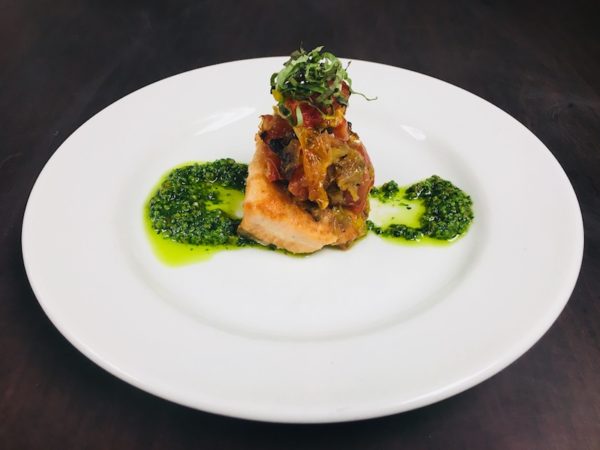Could what you eat possibly protect you against developing Alzheimer’s Disease? Some preliminary studies done at Rush University Medical Center in Chicago suggest that the MIND diet just might.
Dr. Martha Clare Morris, a nutritional epidemiologist at Rush, and her colleagues developed the diet by combining elements of the Mediterranean and DASH diets. Both diets have been, among other things, connected to slower rates of cognitive decline. Specific food items and nutrients related to those slower rates were incorporated into the MIND diet. MIND stands for Mediterranean-DASH Intervention for Neurodegenerative Delay.
In 2015, they studied the diets of 915 people between the ages of 58 and 98 who were enrolled in the Rush Memory and Aging Project. They determined that the “MIND diet lowered the risk of Alzheimer’s Disease by as much as 53 percent in participants who adhered to the diet rigorously, and by about 35 percent in those who followed it moderately well.”
From 2004 to 2017, researchers followed 106 people participating in the Rush Memory and Aging Project who had had strokes. People who’ve had strokes are at higher risk of developing dementia. The participants were put into three groups: Those who strictly adhered to the MIND diet, those who followed it moderately, and those who hardly followed it at all. The people who were strict about following the diet had a substantially lower rate of cognitive decline.
As I said, these were preliminary studies, and more need to be done. In fact, Rush is collaborating with Harvard School of Public Health, Brigham and Women’s Hospital in Boston, and the National Institute on Aging on a three-year randomized controlled trial. The researchers will look at the effects of the MIND diet on 600 people who are 65 and older who have no signs of cognitive impairment but are overweight. One group will be on the MIND diet and the other group will eat their usual diet. Both groups will mildly reduce their calorie intake.
What’s in the MIND diet?
Foods in the MIND diet are divided into two categories: Foods you should eat and ones you should limit. Fortunately, there are more good than not so good foods. Here are the two lists:
Good for your brain
- Green leafy vegetables, e.g., kale and collard greens (At least six servings a week)
- Other vegetables, especially cruciferous — think brussels sprouts, broccoli, cauliflower (At least one serving a day)
- Nuts (Five servings a week)
- Berries (Two or more servings a week)
- Beans or legumes (Three or more servings a week)
- Fish (One or more servings a week)
- Poultry (Two or more servings a week)
- Olive Oil (Use as your main cooking oil)
- Wine (1 serving a day)
Not so good for your brain
You don’t need to eliminate these foods, but eat them in moderation.
- Red meat
- Butter and stick margarine
- Cheese
- Pastries and sweets
- Fried or fast food
What’s important to understand besides the fact that the research is considered preliminary, is that there’s more to Alzheimer’s than what’s in your diet. Age is the biggest risk factor. The older you are, the higher the risk. According to the National Institute on Aging, “The causes of late-onset Alzheimer’s, the most common form of the disease, probably include a combination of genetic, lifestyle, and environmental factors.”
I like to do whatever I can to try and keep my brain sharp. The MIND diet seems pretty simple and straightforward and like the Mediterranean and DASH diets can probably be good for overall health. Jamie Bell, who’s the head chef at Stroudwater Lodge, in Westbrook, Maine shared a delicious recipe that incorporates at least two items from the MIND diet’s good list: fish (salmon) and olive oil. There are also some vegetables — not cruciferous, but vegetables, nonetheless.
Pan-seared salmon with tomato, fennel, and leek ragout

Ingredients
- Four 6-ounce pieces of salmon filet (West coast preferable)
Ragout
- 2 TBS olive oil 1 bulb of fennel – Medium dice 1 medium-size
- leek – sliced
- 1 small onion – medium dice
- 1 TBS garlic – minced
- ¼ cup white wine
- ¼ cup fresh basil
- Salt and pepper to taste
Roasted Tomatoes
- 2 large vine ripe tomatoes – cored and quartered
- 1 tsp dried oregano
- 1 tsp balsamic vinegar
- Salt and pepper to taste
Instructions
- Preheat oven to 375 degrees Fahrenheit.
- In a medium-size mixing bowl toss the quartered tomatoes with oregano, balsamic vinegar, olive oil, salt, and pepper.
- Once evenly coated lay the tomatoes on a sheet pan and place in your preheated oven. Tomatoes should take about 20 minutes and should look lightly caramelized.
- While the tomatoes are in the oven start the ragout preparation.
- In a medium sauce pot on medium heat bring the olive oil up to temp.
- Add the fennel, leeks, onion, and garlic. Sweat the vegetables until translucent.
- Once the vegetables seem soft add your white wine and reduce by half.
- Set the ragout aside.
- When the tomatoes are out of the oven and cooled, rough chop them and add them to the ragout along with the fresh basil.
- Keep in a warm place.
Fish time!
- Heat one tablespoon vegetable oil in a heavy bottom skillet or pan. Before the oil begins to smoke add the lightly seasoned salmon to the pan.
- Allow to brown slightly, and once the fish will easily lift away from the pan flip the fish to its other side and finish cooking to desired internal temperature.
- Top the salmon with the ragout and serve with your favorite side.
The green sauce in the photo is some absolutely delicious pesto that Chef Jamie made. I have a great pesto recipe if you want to try making some. I hope you enjoy exploring the MIND diet.


Very interesting 🙂
I’m loading up on all 10 Sonja!